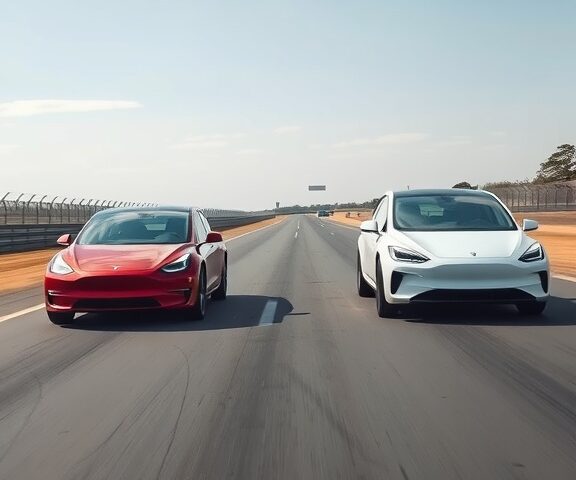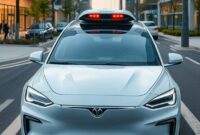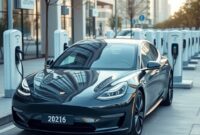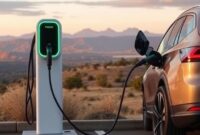Tesla and Hyundai are two major players in the EV market, each offering unique advantages to different types of drivers. While Tesla is known for cutting-edge technology and high-performance models, Hyundai provides affordability, reliability, and practicality. In this comparison, we’ll explore 10 key factors—including range, charging speed, features, and pricing—to help you determine which brand is the right fit for your EV needs.
Design Philosophy: Aesthetic and Functional Aspects
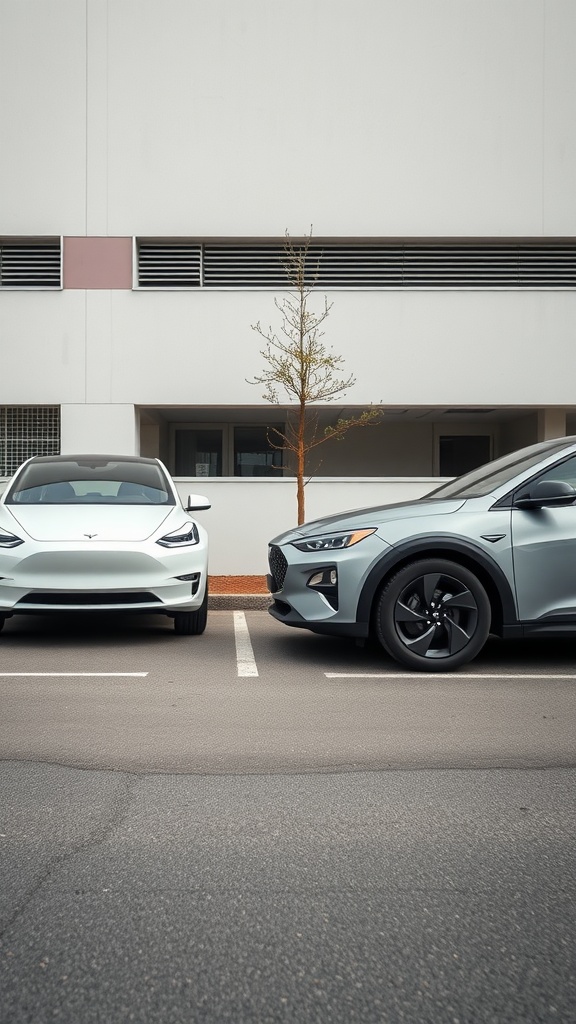
The image nicely captures two electric vehicles parked side by side: a Tesla and a Hyundai. Each car presents a distinct design philosophy that reflects not just their brand identities, but also their approach to functionality and aesthetics.
Tesla’s design is often characterized by sleek lines and a minimalist look. The white Tesla in the image embodies a futuristic vibe, with smooth curves and a clean front. This design isn’t just about looks; it also reduces drag, enhancing efficiency on the road.
On the other hand, the Hyundai, with its bolder and more dynamic design, showcases a different aesthetic. The darker color and pronounced features give it an aggressive stance. This car aims to stand out while still being practical, emphasizing both style and substance.
Both vehicles highlight how design can serve multiple purposes—offering visual appeal while being functional. Whether it’s the clean lines of the Tesla or the sporty flair of the Hyundai, each has a unique take on what modern electric vehicles should look like.
Safety Ratings: Crash Test Results and Features
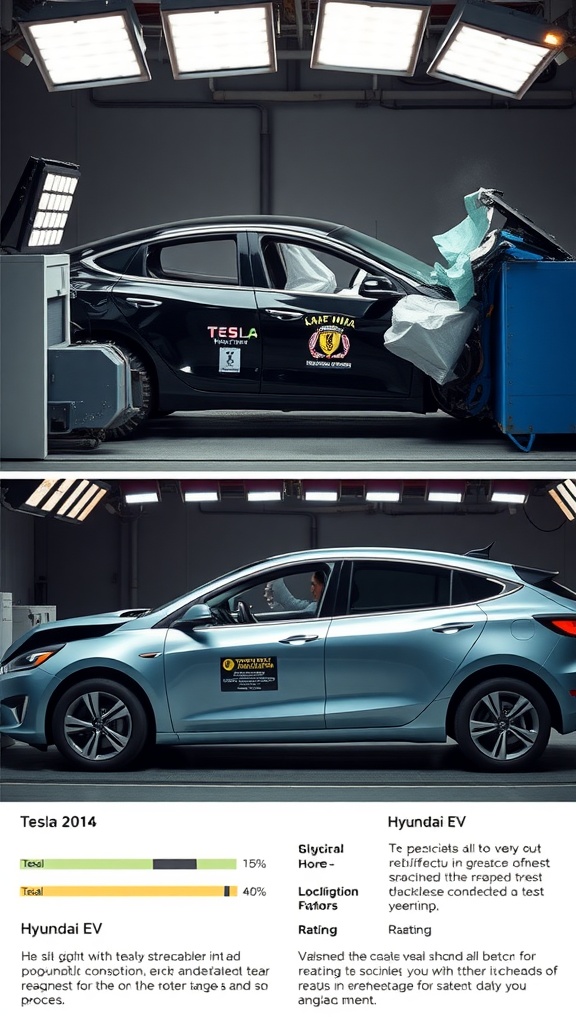
The image shows a crash test comparison between a Tesla and a Hyundai EV. Both vehicles appear to be undergoing rigorous safety testing, which is crucial in determining how well they protect passengers in the event of an accident.
On the left, the Tesla car has a black exterior and is marked with safety ratings. It seems to have a lower safety score, with a significant focus on how well it performed in various crash scenarios. Meanwhile, the Hyundai EV, shown on the right, has a light blue color and indicates a better performance in safety tests.
Crash tests are vital for evaluating vehicle safety. They typically assess various factors, including the structural integrity of the car and how well safety features like airbags deploy. The ratings displayed in the image highlight the importance of these tests in the overall evaluation of electric vehicles.
Overall, while both cars are designed with safety in mind, the image suggests notable differences in their safety ratings. Consumers looking for electric vehicles should consider these results when making a choice.
Cost of Ownership: Purchase Price vs. Long-term Expenses
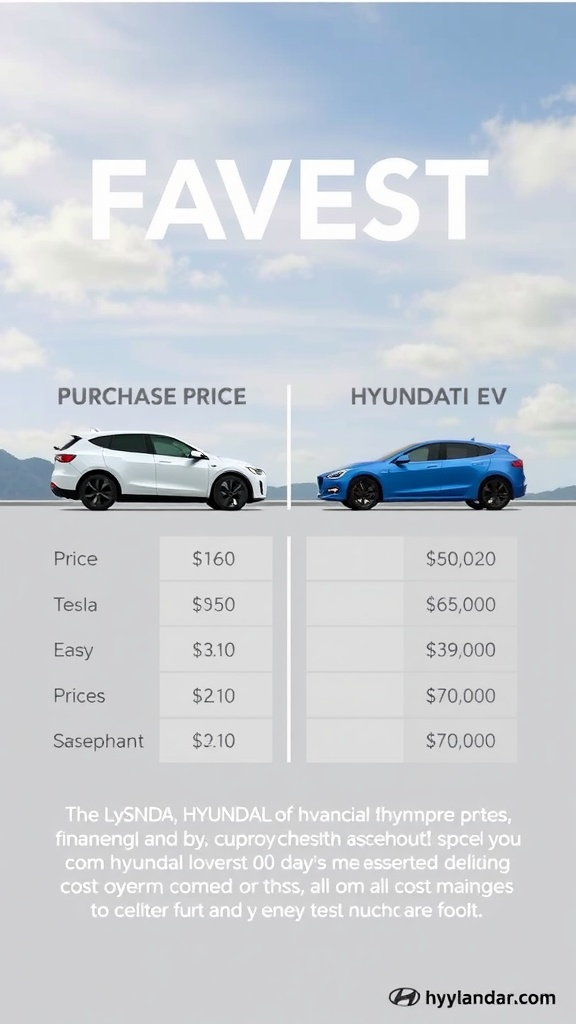
When it comes to electric vehicles (EVs), understanding the cost of ownership is crucial. The image highlights a comparison between Tesla and Hyundai, focusing on their purchase prices and long-term expenses.
Starting with the purchase price, Tesla vehicles typically come with a higher initial cost. For instance, a Tesla may run around $65,000, while a Hyundai EV can be more budget-friendly at approximately $50,020. This initial difference is significant for many buyers.
However, the long-term expenses can also vary. Factors such as maintenance, insurance, and charging costs play a role. The image shows some EVs with additional costs, which might influence your decision. While Hyundai’s price points seem more appealing, Tesla offers some benefits in technology and performance that could justify the higher upfront cost for certain buyers.
Considering both the purchase price and long-term expenses helps in evaluating which option suits your budget and lifestyle. Whether you opt for a Tesla or a Hyundai, knowing these costs will aid in making an informed decision.
Technology Integration: Infotainment and Connectivity Features
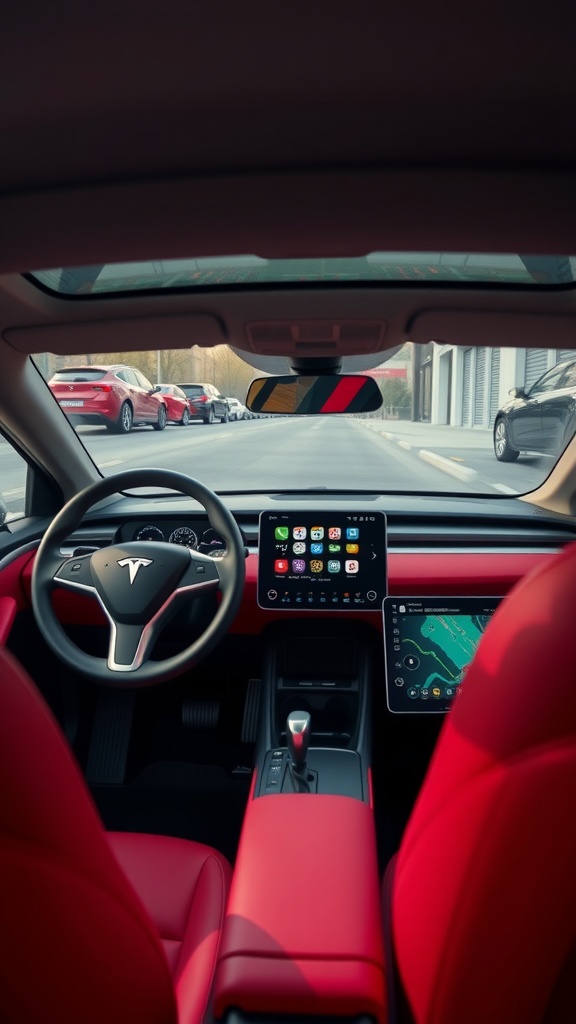
When looking at Tesla and Hyundai, a key area to explore is how they integrate technology within their vehicles. The image highlights a Tesla interior that showcases a sleek and modern design. The dashboard is dominated by large touchscreen displays, making it easy to access various infotainment features.
Tesla’s infotainment system is known for its user-friendly interface and regular software updates. This means that drivers often receive new features and improvements without needing to visit a dealership. The system provides navigation, music streaming, and even gaming options right at your fingertips.
On the other hand, Hyundai offers a different approach. While their infotainment systems may not be as minimalist as Tesla’s, they come packed with features that cater to everyday drivers. Hyundai vehicles often include Apple CarPlay and Android Auto, allowing seamless smartphone integration. This makes it easy for users to access their favorite apps while on the road.
Both brands emphasize connectivity, but they do so in distinct ways. Tesla tends to focus on a more centralized digital experience, while Hyundai offers a balanced mix of digital and traditional controls, ensuring all users are comfortable with the technology.
Sustainability Efforts: Manufacturing and Materials
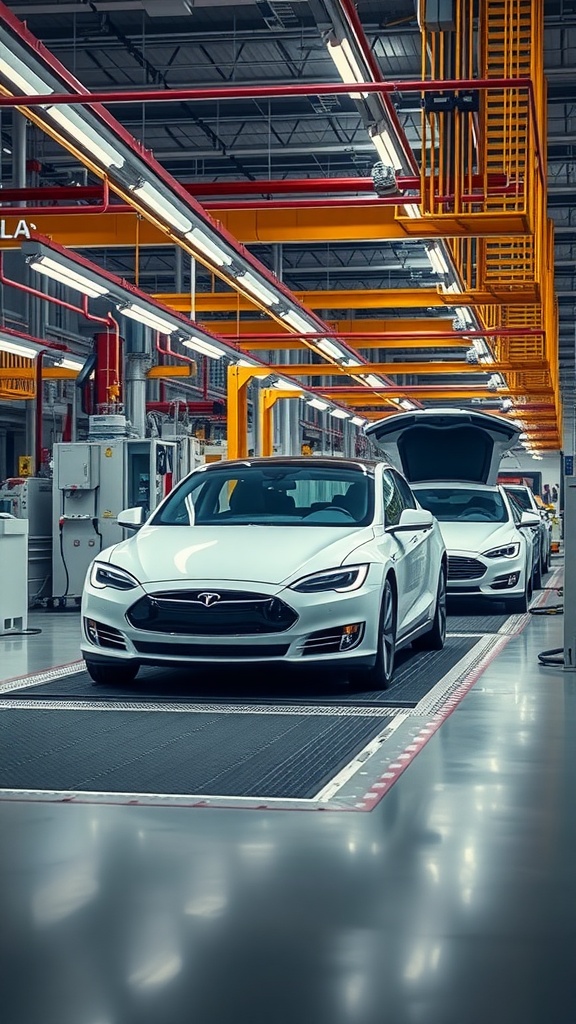
In the world of electric vehicles, sustainability is a hot topic. The image shows a Tesla manufacturing facility, highlighting their approach to creating eco-friendly vehicles. Tesla has made strides in reducing waste and optimizing energy use during production.
One of the key elements in Tesla’s sustainable efforts is their use of recycled materials. This not only lessens the environmental impact but also conserves natural resources. By incorporating these materials, Tesla aims to minimize its carbon footprint.
On the other hand, Hyundai is also dedicated to sustainability. They are focusing on using eco-friendly materials in their vehicles, which includes bio-based plastics and recycled metals. This commitment shows that automakers are increasingly aware of their environmental responsibilities.
Both Tesla and Hyundai are refining their manufacturing processes. They are investing in renewable energy for production, ensuring a greener approach. As consumers, it’s important to consider these efforts when choosing an electric vehicle.
Range Anxiety: Battery Life and Charging Solutions
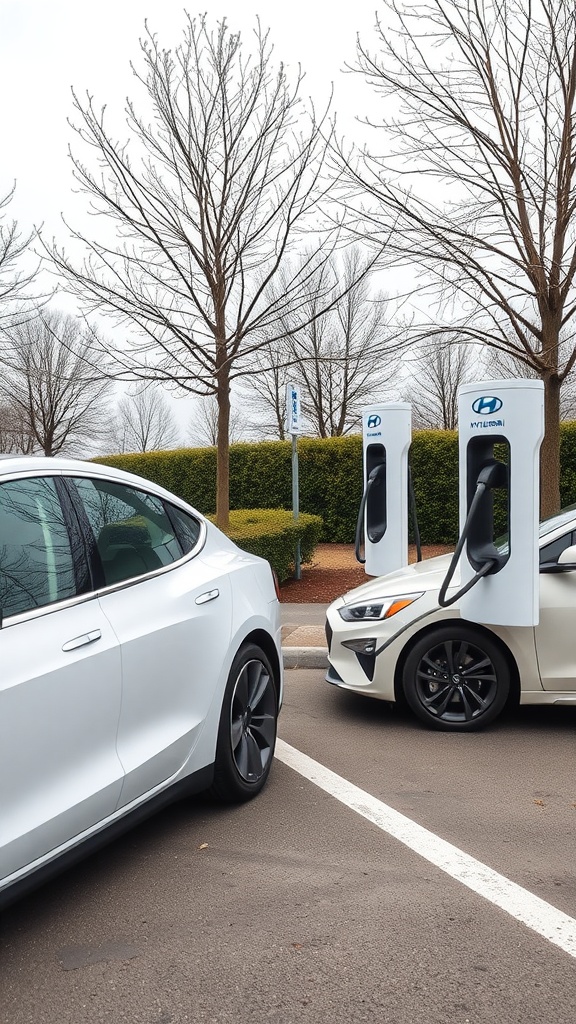
In the image, we see two electric vehicles parked side by side, each connected to their own charging stations. On the left is a sleek white Tesla, and on the right, a stylish Hyundai. This snapshot beautifully represents the growing infrastructure for electric vehicles (EVs) and the importance of charging solutions in battling range anxiety.
Range anxiety is a common concern for potential EV buyers. Many worry about how far they can drive before needing to recharge. Tesla has made strides in alleviating this fear with its vast Supercharger network strategically placed along major travel routes. Their vehicles often boast impressive battery ranges, making long drives more feasible.
On the other hand, Hyundai is also stepping up its game. Their charging stations are becoming more accessible, and models like the Hyundai Kona Electric offer a solid range that suits daily commutes. The image highlights the collaboration between brands in developing a robust charging ecosystem.
Both manufacturers are committed to expanding charging infrastructure, making it easier for drivers to find convenient charging stations. As these networks grow, so does the confidence of EV users. This friendly rivalry between Tesla and Hyundai not only promotes innovation but also ensures that drivers can enjoy their electric journeys without the nagging worry of running out of battery.
Performance Metrics: Acceleration and Top Speed
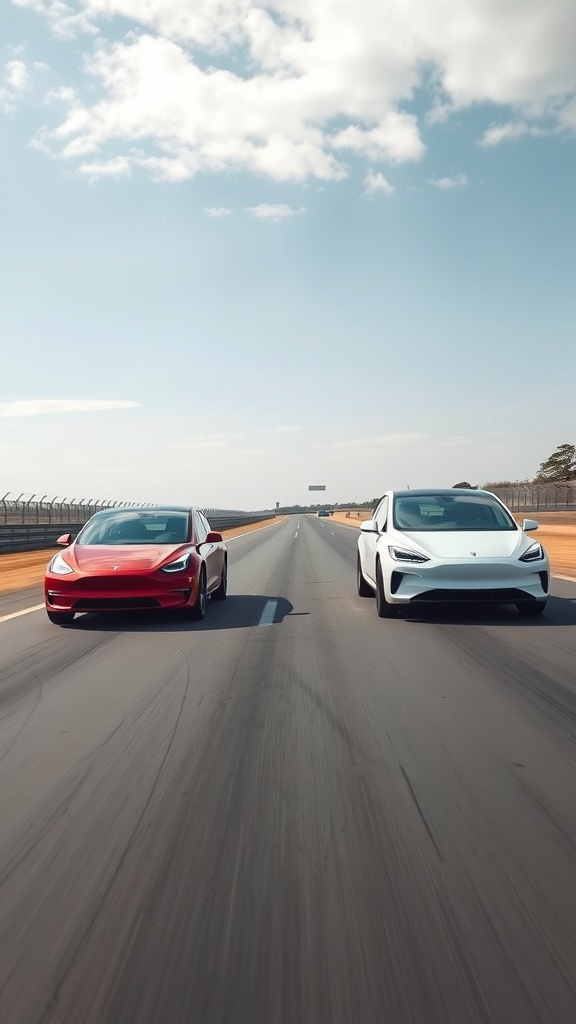
In the world of electric vehicles, performance metrics like acceleration and top speed are critical factors for many buyers. The image showcases two electric vehicles from Tesla, emphasizing their sleek designs and sporty looks. On the left, you see the Tesla Model 3, a favorite among enthusiasts for its nimble performance. On the right, there’s the Tesla Model Y, which offers a bit more space while still delivering impressive speed.
When it comes to acceleration, the Model 3 is particularly notable. It can go from 0 to 60 mph in just over three seconds, making it a hot contender in the EV market. The Model Y, while slightly heavier, still manages to deliver a thrilling acceleration experience, clocking in close behind its smaller sibling.
Top speeds are another aspect where these vehicles shine. The Model 3 can reach impressive speeds, but the Model Y is not far behind. This performance is complemented by their instant torque, giving drivers a fun and responsive driving experience. Both cars are designed for those who appreciate not just functionality but also a bit of adrenaline on the road.
User Experience: Comfort and Practicality in Daily Use

When it comes to electric vehicles, user experience plays a vital role in shaping daily life with these cars. The image captures a young couple loading groceries into the trunk of a Tesla, showcasing the practicality of its design. This scenario reflects how EVs like Tesla can seamlessly integrate into everyday activities, making errands feel less like a chore.
The spacious trunk is a highlight here, as it can accommodate a good amount of shopping bags. This is essential for users who prioritize convenience and comfort during their daily routines. Hyundai models also focus on this aspect, providing ample cargo space for family outings or grocery trips.
Moreover, the relaxed posture of the couple hints at the ease of use in these vehicles. Both Tesla and Hyundai prioritize user-friendly features, such as automatic tailgates and intuitive touchscreen interfaces. These elements contribute to a stress-free experience when loading and unloading items.
Additionally, the image reflects a casual outing, suggesting how EVs can be part of joyful moments in life. Whether it’s a quick grocery run or a weekend getaway, the comfort these vehicles provide is crucial for a satisfying user experience. Ultimately, both Tesla and Hyundai aim to enhance everyday practicality while ensuring comfort for drivers and passengers alike.
Market Perception: Brand Loyalty and Consumer Preferences
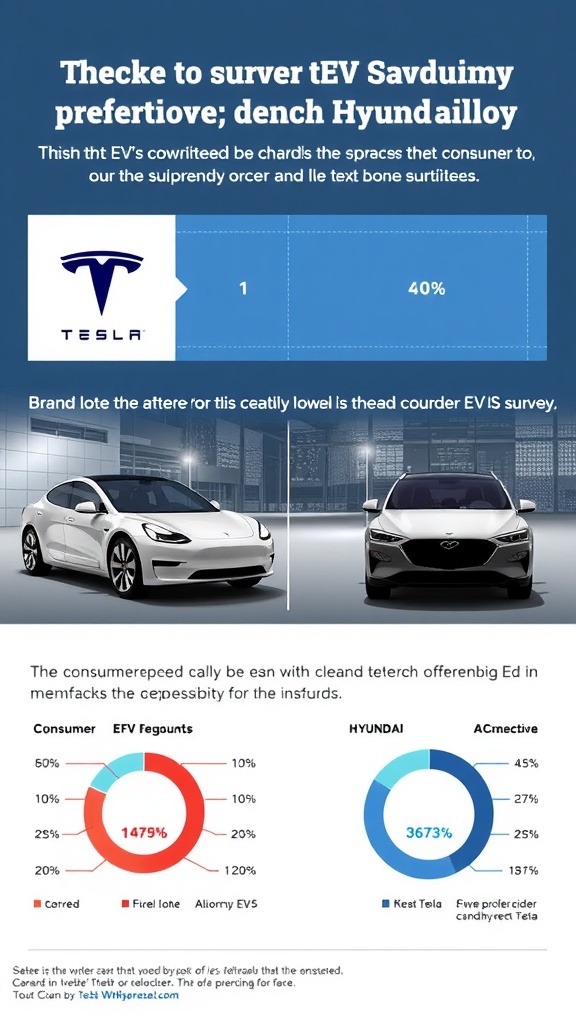
The image presents a comparison between Tesla and Hyundai in the electric vehicle (EV) market, focusing on brand loyalty and consumer preferences. Tesla’s logo and model are shown alongside Hyundai’s, highlighting their presence in the EV sector.
The survey shows that Tesla holds a significant spot in consumer preference, with a brand loyalty score of 40%. This reflects how many consumers favor Tesla over other brands, including Hyundai. The image also notes that Hyundai is becoming more recognized, capturing a fair share of consumer interest.
Consumer preferences are influenced by various factors, such as brand reputation, vehicle features, and technology. The graphic illustrates that Tesla is still the go-to brand for many EV buyers, while Hyundai is working hard to catch up. The data also indicates that Hyundai’s offerings are gaining traction, shown by their efforts to appeal to new customers and enhance their EV lineup.
Future Innovations: Upcoming Models and Technologies
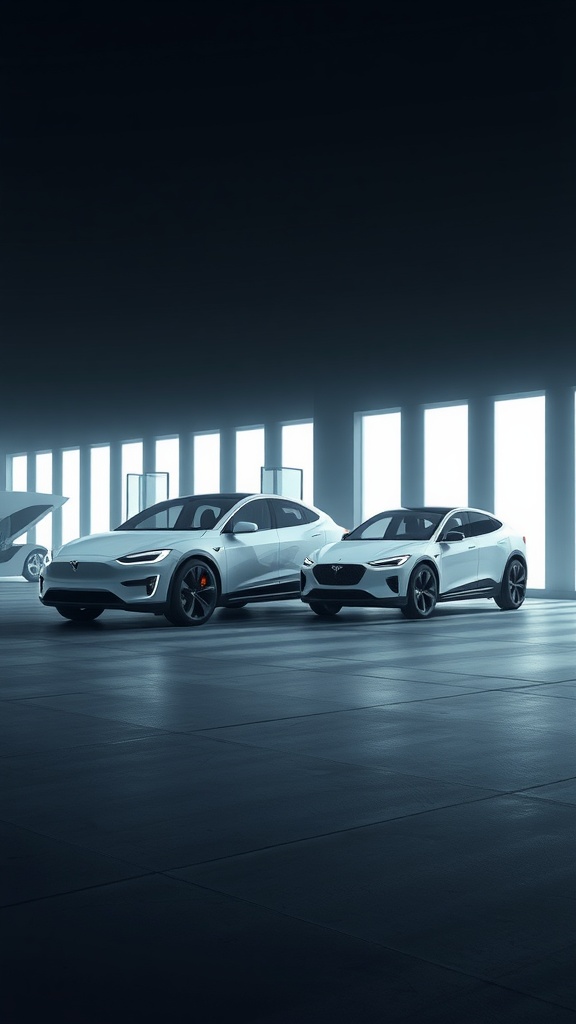
As we look towards the future of electric vehicles, Tesla and Hyundai are both pushing the envelope in exciting ways. The image showcases sleek new models from both manufacturers, hinting at the design aesthetics we can expect in upcoming releases.
Tesla continues to focus on performance and technology. Their upcoming models aim to enhance range and charging speed. Innovations like improved battery technology could lead to longer journeys without the need for frequent stops. Plus, Tesla’s software updates promise to refine the driving experience over time.
On the other hand, Hyundai is expanding its lineup with a focus on accessibility and efficiency. Their upcoming models may feature new eco-friendly materials and smart tech integrations. Expect more user-friendly interfaces and enhanced safety features, making EV ownership more appealing to a wider audience.
Both brands are set to introduce unique technologies, from advanced driver-assistance systems to improved connectivity features. This commitment to innovation ensures that consumers will have a range of exciting options in the coming years.
